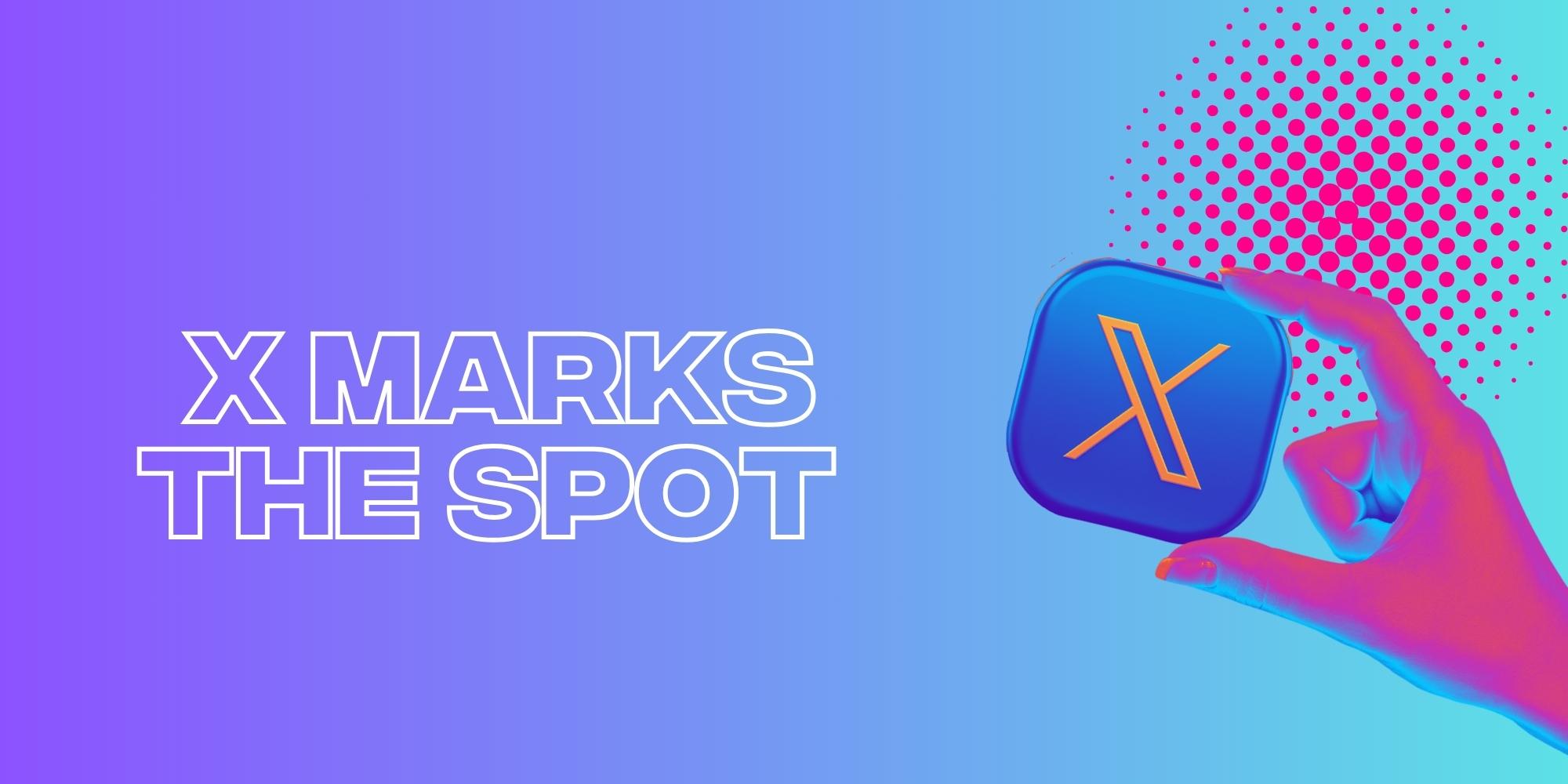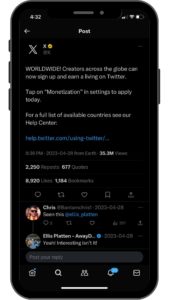X Marks the Spot: The Issues with X’s Revenue Model
Oct 14, 2023
Social Media Platforms

Social media left behind its humble, entertainment-based beginnings long ago.
Since then, it has morphed into a valuable source of information and revenue for users, brands, and creators.
For many people across the globe, social media is the go-to place for news. In fact, 64.5% of the 2.4 billion internet users worldwide go to social media platforms first for their daily news fix.
In order to reflect their new position in society, most social media platforms have adopted an ever-changing revenue model that caters to the demands of users, marketers, and creators. The main kinds of revenue streams adopted by social media platforms are subscription-based, creator-led, and advertising.
One such platform is X.
While the platform formerly known as Twitter was attempting to keep up with the new role of social media and adjust its revenue streams accordingly, Elon Musk’s X is slipping through every crack imaginable. X’s subscription-based, creator-led and advertising revenue streams are all set to fumble under his new leadership.
With the platform struggling to keep its head afloat in a flood of its own making, it appears it might not be long before X as we know it officially goes under.
SUBSCRIPTION SUFFOCATION
Under Musk’s reign, X is set to get far more expensive for the average user. Whilst Twitter was once free for those who used it, Musk has flippantly announced that he is considering charging a fee to all X users.
The fee—the amount of which is currently undetermined—intends to set up a paywall around X in order to remove the large amounts of bots that haunt the platform. Whether this paywall fee is another one of Musk’s off-handed comments or a legitimate business venture is yet to be determined.
As of today, X’s subscription revenue model relies solely on X Premium. Previously known as Twitter Blue, X Premium is an $8 per month subscription that gifts its users with verification and access to new features; including, 50% fewer ads shown in your feed, an edit post function, the ability to write longer posts, and a higher level of priority for your replies and posts.
This is all well and good, but will people actually pay for X? The general consensus seems to be, no.
Whilst users may have been amenable to forking out money for Twitter, many are against paying for X. X Premium allows any user to become verified if they are willing to pay, consequently nullifying the point of being verified in the first place. Moreover, many users are currently expressing disdain at what they call subscription suffocation. This refers to the overwhelming number of platforms that require subscriptions from their users nowadays. Users are expressing a longing for the days of old, wherein using social media did not feel like a business transaction.
On top of this, Musk has brought back many previously banned accounts; many of which were of political nature and were removed due to issues with hate speech. Key examples include Rep. Marjorie Taylor Greene and former President Donald Trump. Many regular users view the reinstatement of such accounts as a sign that Musk will not police dangerous language on his platform, but rather let it run free. This poses a risk to all who use X.
Perhaps most importantly, is the looming issue of Threads. If Meta succeeds in getting the platform off the ground – an event which seems dubious at present – there will be a free version of X. Not only a free X, but an X led by a more reliable company, with stricter hate speech laws, and far fewer bots.

X’S CREATOR-LED REVENUE MODEL
X’s new creator-led revenue model is similarly set up to fail. As with most platforms that engage with this revenue stream, the creator-led model sees X take a cut from the amount the creator revenue model generates through subscriptions.
To qualify for creator subscriptions on X, a creator must be verified and have at least 500 followers. However, this is where the qualifications end. Musk has not put in place any rules around how often a creator must post to qualify for revenue sharing, nor what kind of content they must produce.
As a result, subscribers are experiencing severe dips in content. Musk himself has thousands of subscribers and yet he has only posted four times over the previous four months. This behaviour communicates to users that Musk does not value their time nor money.
By not holding creators to a standard, Musk is creating an unfavourable environment for users. Rather than feeling valued for your dedication, as one does on Patreon for example, users are left feeling cheated. Thus, it is not hard to predict a near future where many if not all subscribers leave X to follow their creators elsewhere. This likely result would cause a complete crash in the creator-led revenue model for the platform.

X’S ADVERTISING REVENUE MODEL
X is home to an interesting problem found in its advertising revenue model. The platform has never been particularly popular as an advertising space for brands and yet advertising revenue has made up 50% of the platform’s overall revenue for years. This, however, is already shifting.
Musk’s X offers several types of ad spaces, including image, video, carousel, and text ads.
Advertising follows the people. In Musk’s era of decreased users, many brands have begun to pull out of the platform in search of ad space that reaches a larger audience. The key reason for X’s huge decrease in ad revenue however, is Musk’s opinions on free speech.
Since Musk’s takeover of the platform, X has continuously come under scrutiny for harbouring hate speech and promoting violence online. Several brands left the platform after their ads were shown next to pro-Nazi content.
It is important for brands to be seen in a clean environment, as they do not want to be associated with any hateful nor controversial content. When a brand’s ad is next to pro-Nazi information, for example, the user makes the assumption that the brand is supportive of that content.
An even bigger wave of companies left Musk high and dry after his scuffle with the Anti-Defamation League; Musk sued the league for claiming that he was increasing hate speech on X by bringing back banned accounts.
So many brands have left X that ad revenue on the platform has decreased by a whopping 60% from April to May of this year alone. This, in conjunction with the stark decreases in users, is creating an environment wholly unconducive to advertising. As such, it seems it is not too far off a leap to assume that X’s ad revenue model is set to crumble along with its other revenue streams.
Even if X was a thriving environment for advertising, it seems the days of ad-free platforms are looming ahead of us. Meta has announced that it is investigating a tier-based ad-free model, and TikTok has expressed interest as well. With other platforms now potentially requiring a payment, it seems likely that Musk will be muscled into following suit.
Being forced into creating ad-free payment options for X users would sweep whatever legs Musk’s ad revenue model still had out from underneath him. Thus, another revenue stream would dry up.
However, some experts posit that paid social media may actually save the industry from its issues with false information and clumsy safety laws. Consumers expect a certain level of professionalism and quality from services that they pay for. Netflix, for example, is held to a very high standard by its users. Platforms such as X often get away with flaws such as loose free speech laws as consumers are not paying to access these services.
Industry types are hypothesising that establishing paid media as the norm would require social media platforms to up the ante and meet consumers expectations. In the case of X, this could force Musk to tighten up hate speech and other severe problems the platform currently operates with; it may even elevate X to the relatively trustworthy news site that many hoped it would be.
TO STAY OR NOT TO STAY
All that being said, what does X’s poor revenue model mean for brands? Perhaps more importantly, why should you care about Musk’s imminent failings?
Ultimately, if X’s revenue models do fall through their apparent cracks, then the platform will be completely uninhabitable for brands. Brands with advertising stakes in the platform will thus have to pick up the pieces and move on.
Aside from this, X’s interest in paid content may signal the dawn of a new era in social media. If its paywall succeeds, and if users are willing to pay for the platform, then other forms of media will be encouraged to introduce payment to their own platforms. As mentioned previously, Meta and TikTok have already expressed interest in delving into tiered-payment schemes that reward users with ad free platforms.
This would completely change the face of social media as we know it. Rather than being a free space for all, social media would join the ranks of almost every other kind of media available to the public. One is reminded of the impact that streaming services have had on television; services such as Disney+ created an ad-free alternative to free-to-air, gained a huge following, and are now re-introducing ads to their platforms under the guise of tiered payments.
Would this new brand of social media be sustainable, however? A universe where users are happy and willing to pay for ad free access to platforms, or simply platforms full stop, seems dubious. Historically, the average consumer has not been willing to pay for ad free media. The majority of users have shown time and time again that they would rather suffer through ads than pay for services such as social media.
When looking at X’s new revenue model, many marketing alarm bells start to ring. Musk’s platform does not seem prepared to show up for users and entice them to remain, nor capable of standing on its own two feet when it comes to running effective revenue models. Now is the perfect time to take stock of your stakes in X and consider moving them elsewhere; switching your strategy from X based advertising to other, more stable platforms is your safest bet. The risk of remaining on X is simply too high.
Whilst only time will tell what impacts X will have on the social media landscape, the options look grim at best. The avenue for success—a world in which X maintains its following, remains free for all, and retains its advertising appeal—is a narrow one indeed.
Our Influencer marketing agency and Social agency are located worldwide, with our agency network based in the USA, UK, UAE and China.
If you want to receive our industry insights, visit our Influencer Marketing & Social Media blogs here.
@ Socially Powerful
Social And Influencer Marketing News + Insights
Get in touch
We'll show you how to start powerful conversation, drive social engagement, build your brand, hit sales targets or meet other goals you have, wherever you are in the world.
Work with us





